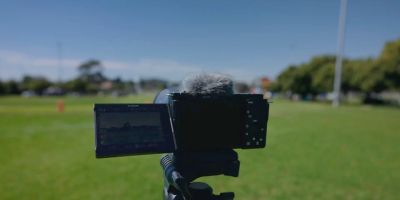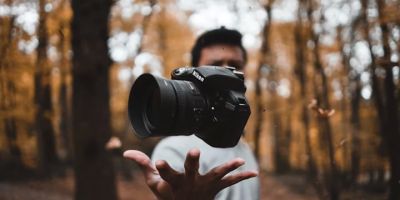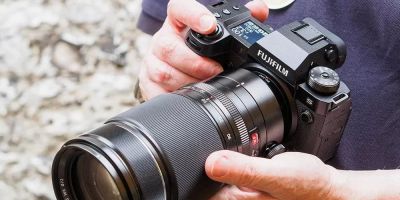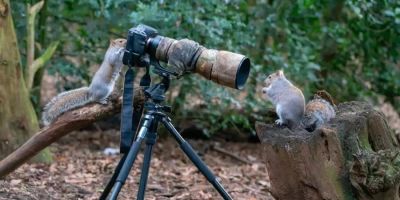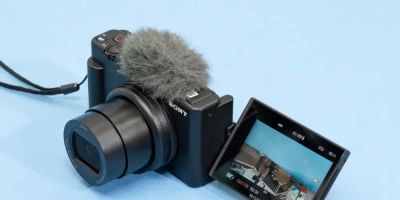Why Choose Infrared Photography?
Infrared photography opens up a whole new world, allowing you to capture images that reveal hidden details not visible to the naked eye. It can transform an ordinary landscape into something surreal and dreamlike, making trees appear white, skies darker, and foliage glowing. As a photographer, I’ve always been fascinated by this unique technique. It’s not just about capturing a scene, but about creating an entirely different perspective. However, the key to mastering infrared photography lies in having the right equipment. Let me guide you through the best gear to use for infrared photography.
1. Choosing the Best Camera for Infrared Photography
When it comes to infrared photography, not all cameras are created equal. You need a camera that can either shoot infrared out of the box or one that can be converted to infrared. There are two main routes to go down: using a camera with built-in infrared capabilities or having your current camera modified to capture infrared light.
Best Cameras for Infrared Photography
If you're looking for an infrared-ready camera, the Canon EOS 6D Mark II stands out as one of the best options. With its full-frame sensor and customizable infrared filters, this camera is a fantastic choice for anyone serious about infrared photography. Another excellent option is the Nikon D750, which offers solid performance in infrared photography due to its high-quality sensor and full-frame format.
Infrared Conversion: Should You Convert Your Camera?
If you already own a camera, you might want to consider converting it for infrared use. Many companies offer camera conversion services, where they remove the built-in infrared-blocking filter, allowing your camera to capture infrared light. I had my Canon EOS 5D Mark III converted, and it was a game-changer. After conversion, it opened up a whole new realm of possibilities, making it one of my go-to cameras for infrared work.
2. Lenses for Infrared Photography
Choosing the right lens for infrared photography is crucial because not all lenses perform well in the infrared spectrum. Some lenses can suffer from issues like focus shift or loss of sharpness. Here are my top recommendations for lenses that excel in infrared photography:
Best Lenses for Infrared Photography
The Canon 17-40mm f/4L is one of my favorites for infrared photography. It’s sharp, and its wide focal length gives you a lot of flexibility when shooting landscapes. For telephoto work, the Canon 70-200mm f/2.8L IS III provides great clarity and sharpness even in infrared conditions. On the Nikon side, the Nikon 24-70mm f/2.8E ED VR is an excellent choice, offering superb optical performance with minimal infrared-induced issues.
Wide vs. Telephoto Lenses
While wide-angle lenses are great for capturing expansive landscapes in infrared, telephoto lenses can isolate specific subjects, such as trees or architectural details, and reveal stunning contrasts. Depending on the type of infrared photography you wish to pursue, you may need both types of lenses in your gear bag.
3. Essential Infrared Filters
Infrared filters are essential for blocking visible light and allowing only infrared light to reach your camera's sensor. Without these filters, your photos will not exhibit the distinctive infrared look. The most common infrared filter is the Hoya R72, which is a favorite among infrared photographers. It blocks visible light while letting infrared light pass through.
Choosing the Right Infrared Filter
When selecting an infrared filter, consider the wavelength of infrared light you want to capture. Some filters block more of the visible spectrum than others. For example, the B+W 092 filter is designed for capturing longer-wavelength infrared light, which can provide a more intense effect in your photographs.
Why Infrared Filters Matter
Using the right infrared filter helps you achieve the full range of infrared effects. The Lee Filters 87C is another great choice for those looking to deepen their infrared images with a more dramatic tone. I’ve personally used it in several projects, and it gives my photos that perfect otherworldly look.
4. Tripods and Stabilization for Infrared Photography
Infrared photography often requires longer exposures, especially in low-light conditions. To avoid camera shake and ensure sharp images, a sturdy tripod is essential. My go-to tripod for infrared shoots is the Manfrotto 190XPRO, known for its stability and flexibility. Whether I’m shooting in a windy environment or in the comfort of my studio, this tripod gives me the confidence to capture sharp, noise-free infrared images.
Best Tripods for Infrared Photography
Other excellent options include the Gitzo GT2545T, which is lightweight yet incredibly sturdy, and the Vanguard Alta Pro 2+, which features an adjustable central column and easy-to-use locking mechanism.
5. Editing Infrared Images
While capturing infrared images requires specific gear, the editing process also plays a significant role in bringing out the full potential of your shots. Programs like Adobe Lightroom and Photoshop allow you to adjust color channels, contrast, and exposure to enhance the surreal qualities of infrared images.
My Editing Workflow for Infrared Photography
In my workflow, I begin by adjusting the white balance to get rid of any unwanted color casts. Then, I fine-tune the contrast and brightness to bring out the glowing foliage and dark skies. Finally, I play with the color channels to enhance the infrared effect, often shifting the red and blue channels to create a striking, otherworldly look.
Common Editing Challenges
One challenge with infrared photography is dealing with false color. It’s something you need to be aware of during both shooting and editing. However, once you get the hang of color correction, you’ll be able to create stunning, surreal landscapes that look like something out of a dream.
Final Thoughts
Infrared photography is a fascinating and rewarding genre, but it requires the right gear to truly bring your visions to life. With the right camera, lens, filters, and accessories, you’ll be able to capture breathtaking images that offer an entirely different perspective of the world. Whether you’re just starting or are already an experienced infrared photographer, investing in the right gear will undoubtedly enhance your creative process.
To get the best recommendations and services for infrared photography, be sure to check out our website at Photo Studio, where we offer personalized advice and high-quality products for your photography needs.

